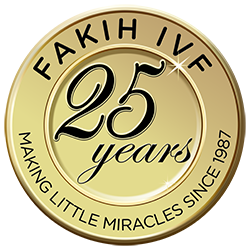How many eggs are enough for IVF?
Monday, May 22, 2023
One of the success factors many women and couples focus on when undergoing IVF treatment is the number of eggs retrieved at the oocyte pick up (OPU) stage of the cycle. But does this number (high or low) affect the likelihood of pregnancy from the IVF cycle?
When attempting in vitro fertilization, the level of response of the ovaries varies greatly when women take the injectable FSH drugs for ovarian stimulation . This leads to a range of eggs being retrieved at the egg retrieval procedure.
Before stimulate the woman with the FSH containing drugs, antral follicle counts are the best predictor of the response the ovaries will give, and the number of eggs that will be retrieved.
One study showed the benefit of egg yield decreased significantly with advancing female age.
The study indicated that to produce 1 and 2 euploid embryos, 5 and 14 oocytes would be required at age 34. However 10 and 24 oocytes would be required at age 38. Hence, the older a woman is the more eggs have to be retrieved in order to increase the chance of obtaining an additional chromosomally normal embryo.
Because the younger the woman, the better quality her eggs, a younger woman could have the same chances of getting pregnant with fewer retrieved eggs than an older woman with more retrieved eggs.
As a rule of thumb, however, having about ten to 12 mature eggs after egg retrieval (not all eggs retrieved will be developed or mature enough to fertilize) is a good number of eggs and will give a woman a good chance of having at least one normal embryo, which gives a woman a 65 percent chance of pregnancy, because not all normal embryos will lead to pregnancy, so having several normal embryos available for transfer in case of a failed transfer yields the best chances of success.
Also, keep in mind that pregnancy rates will also depend on the overall egg quality of the eggs retrieved during one particular IVF cycle. Because every woman has normal and abnormal eggs, no matter her age, each ‘batch’ of eggs recruited during each IVF cycle will vary in its genetic makeup and yield varying qualities of embryos. Some cycles will result in more normal embryos than other cycles.
Is there an optimum number of eggs collected?
Any attempt to propose an optimum number of egg collected needs to take into account many other parameters such as:
• Individual patient characteristics (such as age and ovarian reserve).
• The indication for treatment.
• Whether one is interested in the pregnancy rate after just the fresh embryo transfer or the cumulative pregnancy rate after both fresh and frozen embryo transfers.
• The number of embryos transferred (single vs. multiple embryos transferred).
• The protocols followed in the laboratory, and Most importantly, the patient’s wishes.
It should not be overlooked that aiming for a high number of eggs (usually more than 15) can increase the risk of ovarian hyperstimulation syndrome (OHSS), a potentially serious complication of ovarian stimulation. However, newer IVF protocols can substantially reduce this risk, allowing fertility specialists to maximize the results from a single IVF cycle and thereby reduce the financial, physical and emotional cost of fertility treatment. Increasing the oocyte yield should always be performed safely which means an individualised approach should be discussed with your fertility specialist.
Ultimately, the more eggs you have retrieved, the better, but age is a big factor here.
Because eggs deteriorate with time, younger women tend to have better quality eggs than older women, so even if a younger woman has fewer eggs retrieved than she hoped, the chances of her eggs fertilizing, blastulating, and leading to a normal embryo and pregnancy are good.
Plus, every ovary is different, so comparing your egg retrieval numbers to your friend’s is not the most productive thing to do.









